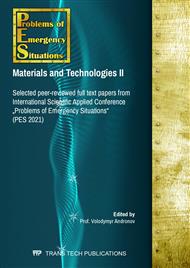p.61
p.68
p.77
p.85
p.93
p.100
p.108
p.119
p.129
Application of Thermo-Frictional and Chemical-Thermal Methods Treatments for Surface Strengthening of Materials
Abstract:
In the article, the issues of using the methods of thermo-frictional and chemical-thermal treatments for surface strengthening of steel tools were disclosed. 65G steel and U8A steel were considered. A flat graver and a cylindrical root roller were considered to be tools in need of hardening. The nature of the jewellery work using such a tool has been described. Hardening techniques, experimental studies and macro photographs of the samples were presented in this article. A detailed metallographic analysis and measurement of the microhardness of the cross-sections of the prototypes after their strengthening using various methods was carried out. The metallographic nature of the reinforcement with the formation of surface "white layers" was shown. Comparison of the properties of the samples before and after strengthening was carried out. Conclusions about the strengthening effect of the thermo-frictional and chemical-thermal methods of strengthening were made.
Info:
Periodical:
Pages:
93-99
Citation:
Online since:
July 2021
Authors:
Price:
Сopyright:
© 2021 Trans Tech Publications Ltd. All Rights Reserved
Share:
Citation:


